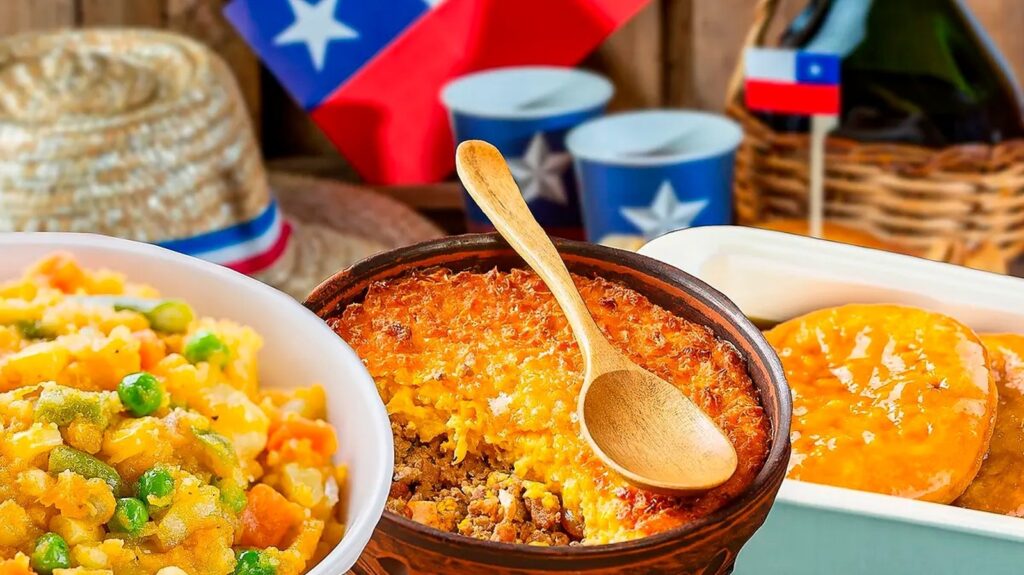Ever wonder what makes Chilean food uniquely delicious? Well, let’s dive into the heart of Chile’s culinary scene. If you could take a peek into a typical Chilean kitchen, you’d likely find a feast of flavors heavily reliant on some key ingredients. The star of the show? It’s hard to pinpoint just one, but you’ll frequently encounter seafood, corn, and potatoes.
These staples are creatively used in dishes from sea to land, reflecting Chile’s long coastline and rich agricultural heritage. Curious on The Majority of Chilean Food Contains What? Let’s keep uncovering the flavors that define Chilean cuisine as we move on!

The Majority of Chilean Food Contains What?
Chilean cuisine? It’s like a vibrant mixtape of flavors that truly showcases the country’s diverse geography. From the rugged Andes to the sprawling coastlines, the food scene here is all about fresh, local ingredients. You’ve got your seafood, taking the spotlight in dishes like mariscal and empanadas de mariscos.

Then, there’s a love affair with corn, which shines in pastel de choclo, a sweet and savory corn pie. Let’s not forget about the potatoes and meats, especially lamb and beef, essential for hearty meals.
Dive into this culinary journey, and you’ll taste Chile through its simple yet profound dishes. Let’s roll on to see how these ingredients come alive in popular Chilean recipes!

The Most Common Meat in Chilean Cuisine
When it comes to meat in Chilean cuisine, a few key players stand out, each bringing its unique flavor and tradition to the table.
- Beef: The backbone of many Chilean dishes, beef is celebrated from simple street food to gourmet cuisine. Popular in asados (Chilean barbecues), beef cuts are grilled to perfection and often served with pebre, a local condiment made from cilantro, onions, and peppers. It’s not just about the grill though; beef is also the star in stews and caldillos, warming the soul one spoonful at a time.
- Pork: Another favorite, pork finds its way into many traditional dishes. It’s the primary ingredient in choripan, a beloved street food featuring chorizo sausages served in bread. Pork also appears in various stews and casseroles, contributing to Chile’s rich culinary tapestry.
- Lamb: Especially popular in the Patagonia region, lamb is used in various forms, from roasts to stews. The harsh, windy climate of southern Chile is ideal for sheep farming, making lamb a local staple. Dishes like asado de cordero, where the meat is slow-cooked over an open fire, highlight its tender, flavorful nature.

Each meat brings its distinct flavors to Chilean cuisine, creating a diverse and meaty menu that’s sure to satisfy any carnivore’s cravings. Let’s explore how these meats are transformed into mouth-watering dishes next!
The Most Common Spices in Chilean Cuisine
Chilean cuisine might not be as spicy as some of its South American neighbors, but it definitely doesn’t skimp on flavor. Here are some of the most commonly used spices that add that special touch to Chilean dishes:
Merquén: This is the standout spice of Chile, a smoky blend of dried and smoked chili peppers, coriander seeds, cumin, and sometimes salt. It’s used to season meats, stews, and soups, giving them a distinctive, fiery kick.

Cumin: Essential for its earthy, warm flavor, cumin is a staple in many Chilean recipes, especially in stews and marinades. It adds depth to dishes and pairs wonderfully with other local ingredients.

Coriander (Cilantro): Both the seeds and the fresh leaves are widely used. The seeds offer a lemony, nutty flavor to dishes, while fresh cilantro is often sprinkled on top of finished dishes for a burst of freshness.

Paprika: Used to add color and sweetness, paprika is a milder counterpart to merquén. It’s often found in rubs and as a garnish for creamy soups and potatoes.

Oregano: Bringing a slightly bitter, earthy zest, oregano is a favorite in Chilean kitchens, especially for seasoning meats and adding flavor to pizzas and breads.

These spices reflect the subtle yet satisfying essence of Chilean cooking, enhancing dishes without overpowering the natural flavors of the ingredients. Let’s keep the flavors rolling and discover how these spices are used in typical Chilean recipes!
The Most Common Condiments in Chilean Cuisine
Chilean cuisine really comes alive with its condiments, which add layers of flavor to both traditional and modern dishes. Here’s a rundown of the most beloved ones that grace the tables:
Pebre: Think of it as the Chilean salsa. This vibrant condiment made with chopped onions, tomatoes, garlic, cilantro, and aji pepper (Chilean green chili) is mixed with olive oil and vinegar. It’s the go-to for topping empanadas, spooning over grilled meats, or simply spreading on bread.

Chancho en piedra: Similar to pebre but ground in a stone mortar (hence the name “pig on a stone”), this tomato-based salsa is chunkier and often used as a dip or a spread for sandwiches.

Merquén: While also a spice blend, merquén is frequently used as a condiment. Its smoky chili kick is perfect for adding heat and depth to mayo or cream-based sauces, or even just sprinkled over dishes for a smoky finish.

Chimichurri: Though originally from Argentina, chimichurri has been fully embraced in Chile, especially as a companion to barbecued meats. Made with parsley, minced garlic, olive oil, oregano, and vinegar, it adds a fresh, herby zing to heavy dishes.

Mostaza (Mustard): Often found in simpler forms, Chilean mustard can be a bit sweeter than its American or European counterparts and is commonly used in sandwiches and hot dogs, particularly the famous completo.

These condiments not only add flavor but also texture and color to Chilean dishes, making them an integral part of the dining experience. Ready to explore how these condiments are made or perhaps whip up your own version? Let’s get into that next!
Wrapping Up
Chilean cuisine is a vibrant tapestry of flavors, each dish a testament to the country’s rich cultural heritage and diverse geography. From hearty stews and tender meats to fresh seafood and robust condiments, the ingredients are as varied as the landscapes from which they come. The use of staple spices and unique condiments adds depth and excitement to every meal, making Chilean food not just nourishing but truly memorable.
Whether you’re cooking for comfort or exploring new culinary landscapes, these recipes offer something for everyone. Dive in, experiment with these flavors, and bring a piece of Chile into your kitchen. The journey is as rewarding as the taste!
Disclosure: Our blog contains affiliate links to products. We may receive a commission for purchases made through these links. However, this does not impact our reviews and comparisons. We try our best to keep things fair and balanced, in order to help you make the best choice for you.







